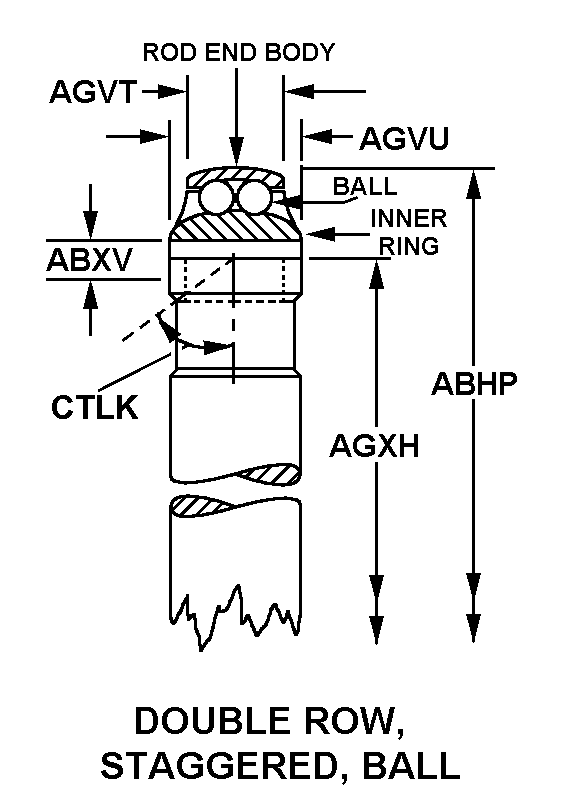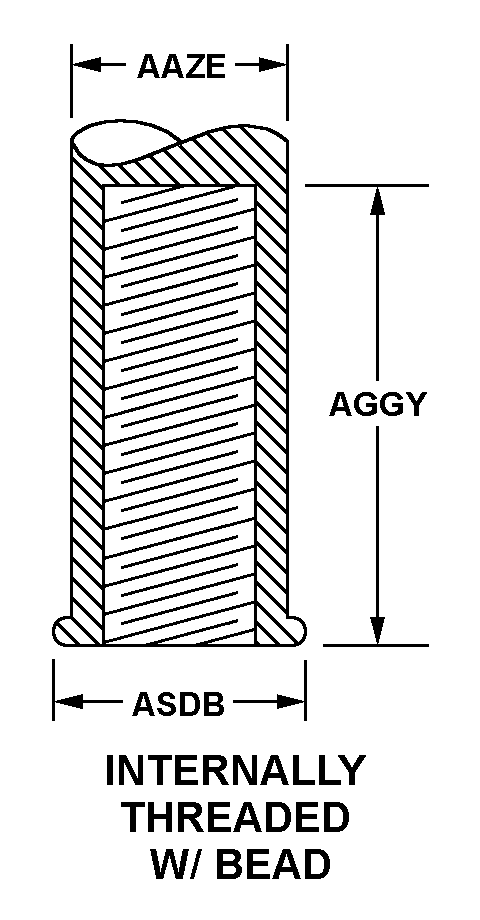3110010370529
Price Quote Get an up to date pricing and availability quote for this product. Order online or over the phone.
Quality Commitment
Serving our customers with quality and safety first.
- AS9120 Certified
- Audited supply chain
- ITAR Registered
- DDTC Registered
- HAZMAT Certified
- Customer service objectives
- Every product 100% inspected

3110-01-037-0529 Specification Set by the OEM (see RNCC code 3)
3b
RIGHT-Hand
0.3650in. and 0.3850in.
internally threaded w/bead
1.7000in. and 1.7300in. ⁓1-47/64"
0.1897in. and 0.1900in.
grease
0.7190in. and 0.7810in.
0.3180in. and 0.3380in.
0.4320in. and 0.4370in.
1.3650in. and 1.3850in.
pressed
2
SELF-Aligning
internal
0.4280in. and 0.4480in. ⁓29/64"
28
0.250in. ⁓1/4"
10.00 degrees
M0.0004 in. max internal radial play, 8 microinches max surface finish for ball and inner and outer rings, rings and balls rockwell c scale 60-66, 1hole 0.093 in. min 0.097 in. max thru shank 0.312 in. from shank end
MIL-G-81322 mil spec single material response
steel comp E52100 inner ring
MIL-S-7420 mil spec single material response inner ring
cadmium shaft
QQ-P-416, cl 2 fed spec single treatment response ball
double row, staggered, ball
unjf
Cross Reference Parts Part numbers that meet the specification outlined on this page and set by the OEM
Identification Item Identification Guide (IIG) and Item Name Code (INC)


Definition Definition of approved item name (AIN): "BEARING,BALL,ROD END"
A special single or multiple-row ball bearing, rigid or self-aligning, and constructed with either a solid or hollow shank, internally or externally threaded.
3110-01-037-0529 Material Hazmat, Precious Metals, Criticality, Enviroment, and ESD
Indicates there is no data in the hmirs and the nsn is in a fsc not generally suspected of containing hazardous materials.
Precious metal content is unknown
The item does not have a nuclear hardened feature or any other critical feature such as tolerance, fit restriction or application.
Identification Codes
HMIC: Hazardous Material Indicator Code. A one position code that identifies a hazardous item.
PMIC: Precious Metal Indicator Code. A one position code which identifies items that have precious metals as part of their content. precious metals are those metals generally considered to be uncommon, highly valuable, and relatively superior in certain properties such as resistance to corrosion and electrical conductivity.
ESD: Electrostatic Discharge. Indicates if an item is susceptible to electrostatic discharge or electromagnetic interference damage. electrostatic discharge damage occurs when an accumulation of static electricity generated by the relative motion or separation of materials is released to another item by direct contact. electromagnetic interference damage occurs when an item comes into proximity with an electrostatic or magnetic field.
ENAC: Enviromental Attribute Code. Identifies items with environmentally preferred characteristics.
CRITL: Criticality Indicator Code. Indicates an item is technically critical by tolerance, fit, application, nuclear hardness properties, or other characteristics.






